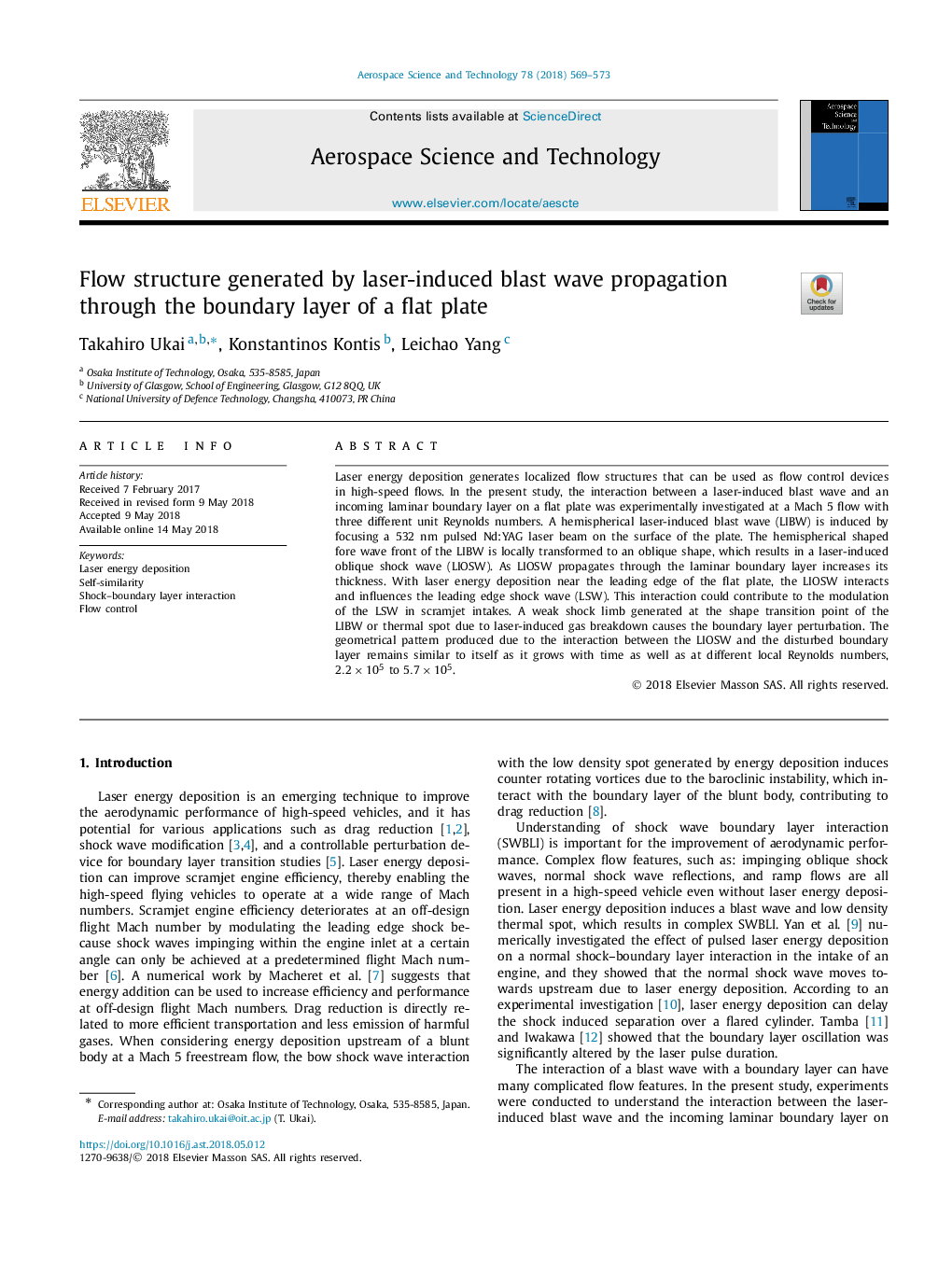| Article ID | Journal | Published Year | Pages | File Type |
|---|---|---|---|---|
| 8057567 | Aerospace Science and Technology | 2018 | 5 Pages |
Abstract
Laser energy deposition generates localized flow structures that can be used as flow control devices in high-speed flows. In the present study, the interaction between a laser-induced blast wave and an incoming laminar boundary layer on a flat plate was experimentally investigated at a Mach 5 flow with three different unit Reynolds numbers. A hemispherical laser-induced blast wave (LIBW) is induced by focusing a 532 nm pulsed Nd:YAG laser beam on the surface of the plate. The hemispherical shaped fore wave front of the LIBW is locally transformed to an oblique shape, which results in a laser-induced oblique shock wave (LIOSW). As LIOSW propagates through the laminar boundary layer increases its thickness. With laser energy deposition near the leading edge of the flat plate, the LIOSW interacts and influences the leading edge shock wave (LSW). This interaction could contribute to the modulation of the LSW in scramjet intakes. A weak shock limb generated at the shape transition point of the LIBW or thermal spot due to laser-induced gas breakdown causes the boundary layer perturbation. The geometrical pattern produced due to the interaction between the LIOSW and the disturbed boundary layer remains similar to itself as it grows with time as well as at different local Reynolds numbers, 2.2Ã105 to 5.7Ã105.
Keywords
Related Topics
Physical Sciences and Engineering
Engineering
Aerospace Engineering
Authors
Takahiro Ukai, Konstantinos Kontis, Leichao Yang,
